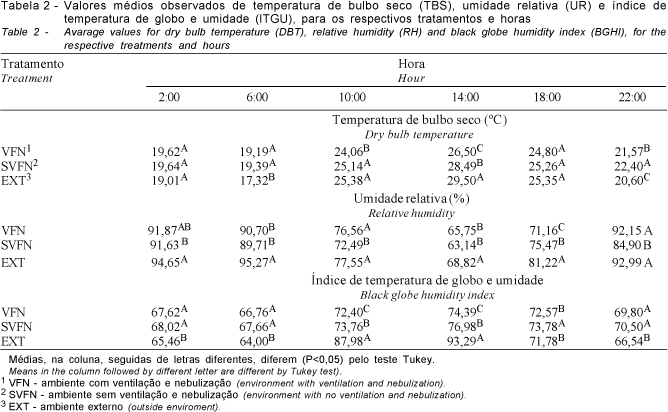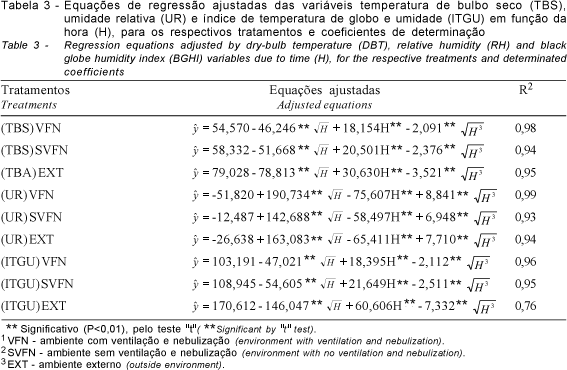The objetive of this experiment was to evaluate a system of thermal artificial condition for gestation sow housing, at Ponte Nova-MG. A total of 95 Cambourough 22® sows from the second parturition were assigned to two treatments. Forty-six sows of treatment one were submitted, during the first 35 days of gestation, to a system of controlled thermal artificial condition (fans and aspersion) which were automatically turned on according to the air temperature (VFN). In treatment two, during the same period 49 sows of the same variety as the first ones were submitted to any artificial thermal condition (SVFN). From 35 days on of gestation to the parturition, all the animals received the same management. The average room temperature for treatments VFN and SVFN were 22.6ºC and 23.4ºC, respectively. During the hottest hours of the day, this system was efficient to reduce the temperature by 2ºC. In spite of such difference, the system could not reduce the room temperature to an adequate level to these animals (18-21ºC). For this reason the animals showed high breathing frequency in both treatments, but this was capable to maintain the body temperature of the sows. There were no differences on the evaluated parameters of reprodutive efficiency and progesterone levels. That is why the ventilation and nebulization systems during the autumn is not justified since the temperatures at this time of the year is not high enough to take the animals to a stress condition which could directly affect their reproductive performance.
reproductive efficiency; thermic acondition; swine






